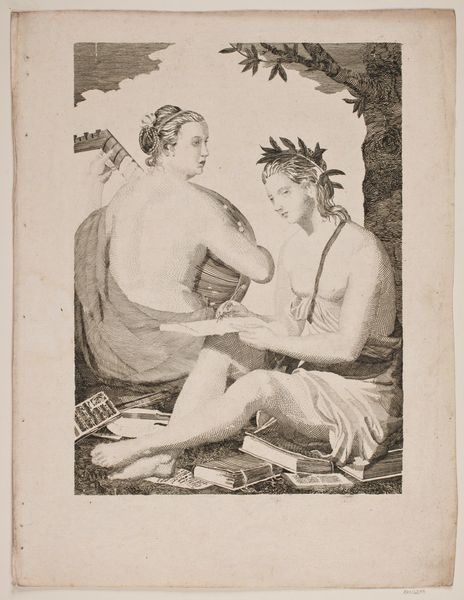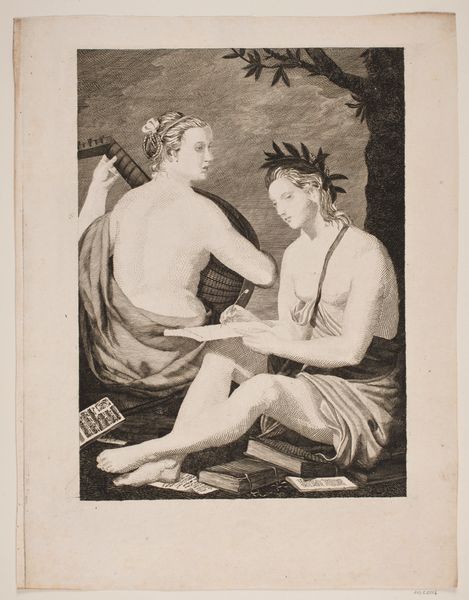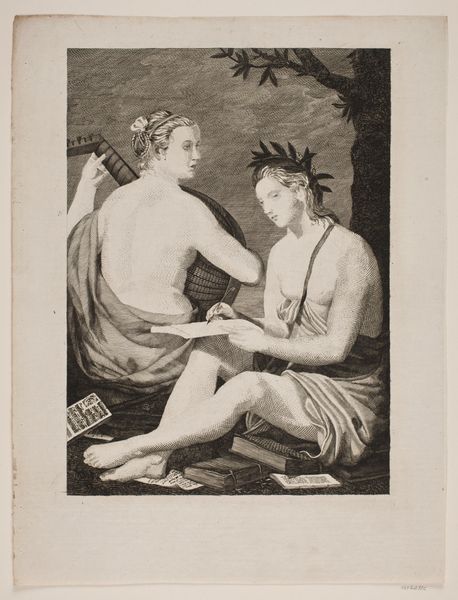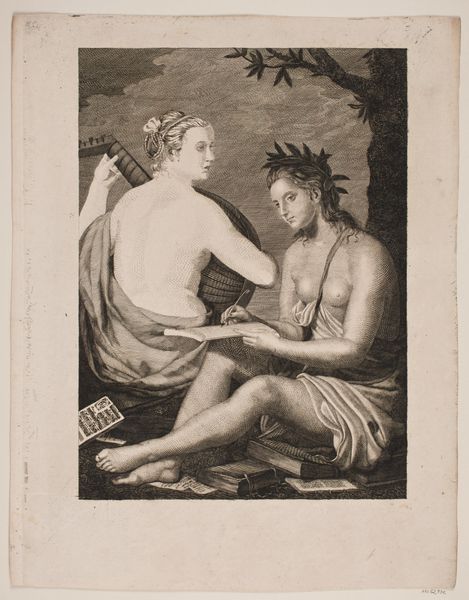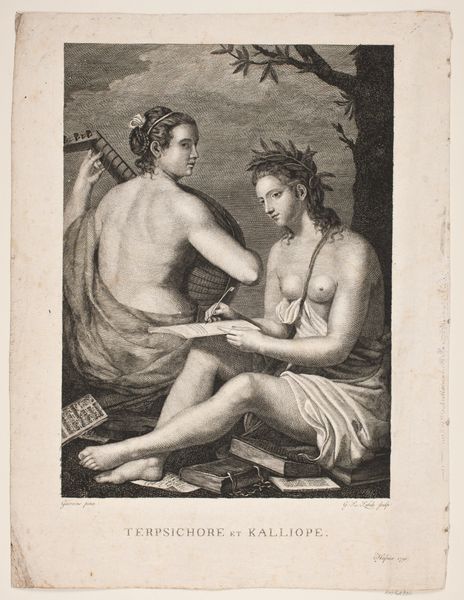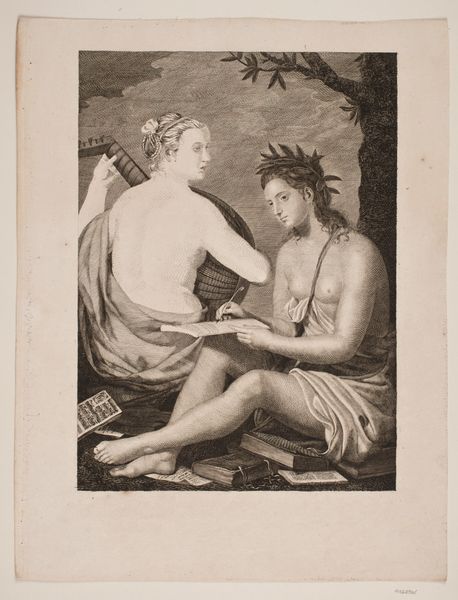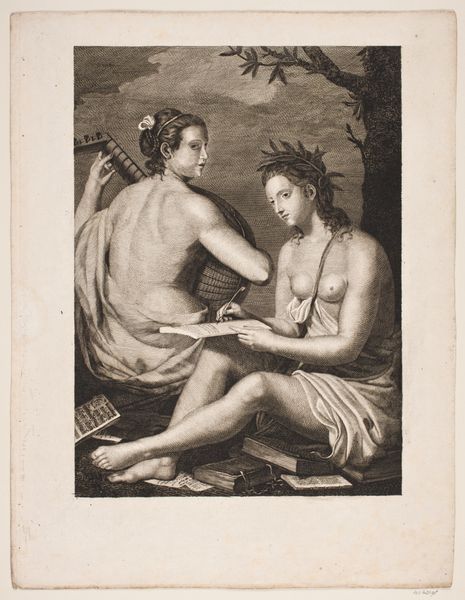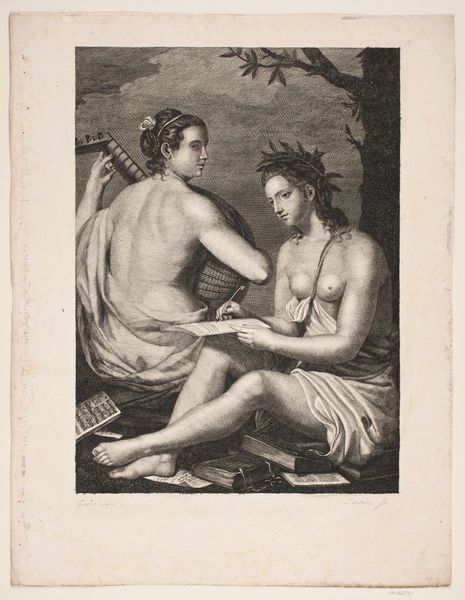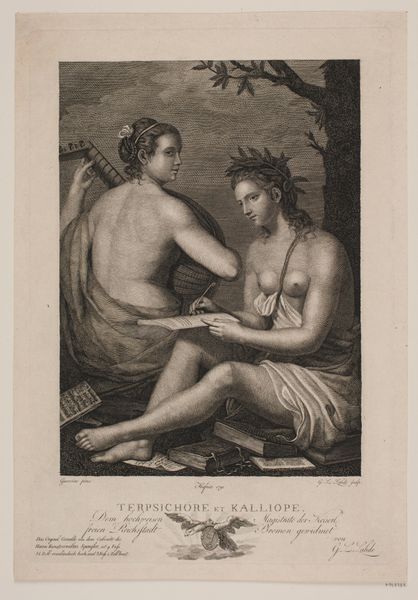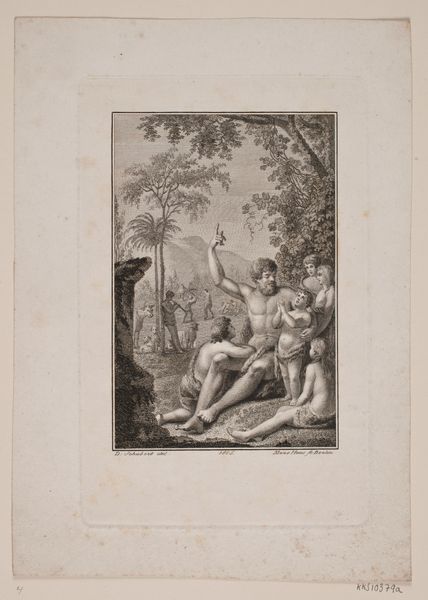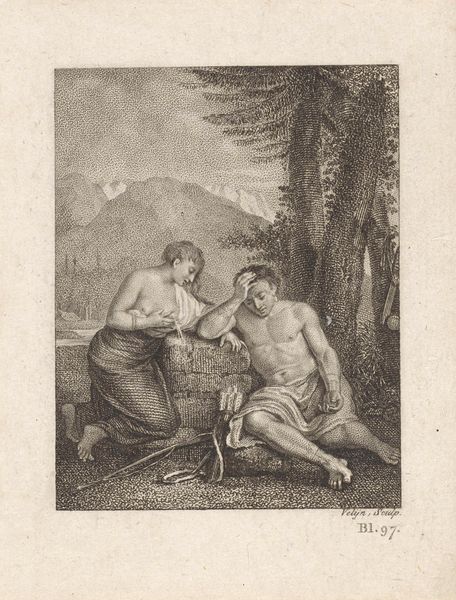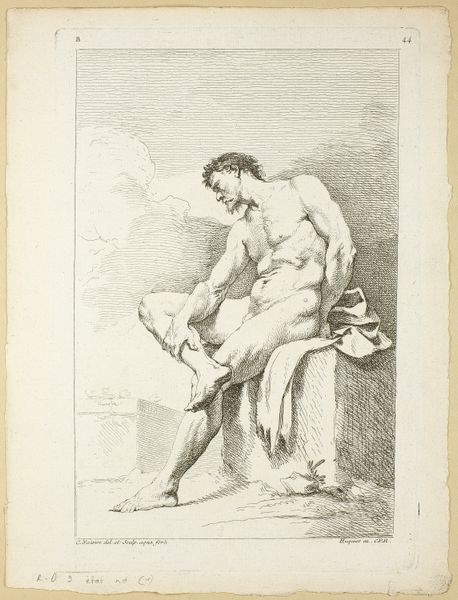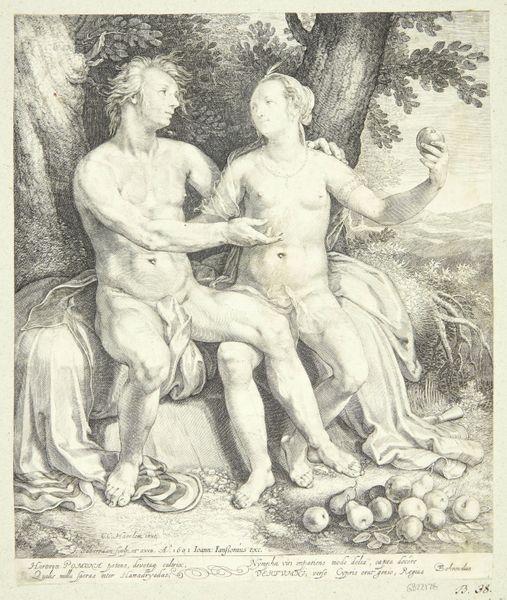
drawing, print, engraving
#
drawing
#
neoclacissism
# print
#
greek-and-roman-art
#
landscape
#
figuration
#
history-painting
#
engraving
Dimensions: 290 mm (height) x 210 mm (width) (billedmaal)
Curator: Gerhard Ludvig Lahde's engraving, "Terpsichore et Kalliope," dating from 1791, presents a fascinating example of Neoclassical aesthetics. Its cool tonality and measured forms are quite striking. Editor: Yes, the stark contrast immediately gives it a dramatic, almost theatrical feel. The figures seem caught in a moment of profound artistic contemplation, underscored by the musical instrument and the act of writing. Curator: Precisely. Notice how the artist employs a limited palette and relies on precise linework to define the figures and the landscape. The composition adheres to a strict sense of order, divided clearly between the two muses, one inspiring through sound, the other through narrative. Editor: Symbolically, the instruments and scrolls evoke themes of creativity and inspiration, the foundational components for artistic pursuit and legacy, no? Calliope's scroll suggests epics and grand narratives, while Terpsichore's lyre embodies the beauty of music and dance, enriching those narratives. It makes me wonder about the social context of artistic patronage during that period, and its implications. Curator: An astute point. The piece exemplifies the Enlightenment’s reverence for classical antiquity. Look closely at the idealised anatomy, the draping, and the laurel wreath, all distinctly Greco-Roman motifs appropriated to ennoble the pursuit of the arts. Editor: Yet there’s a melancholic stillness. The shading gives a quietness almost of the sublime and suggests not only the labour, but also perhaps the weight of artistic endeavors as perceived at the time. Do you notice an echo of previous masters in Lahde's aesthetic here? Curator: Undoubtedly, there’s a dialogue with previous artists evident in the composition and the subject matter. This piece showcases Lahde's ability to engage with those traditions, while adding his own distinct formal restraint. The precise application of lines evokes the visuality and taste of the era quite brilliantly. Editor: It has me pondering the connection between artistic freedom and the classical constraints that the era favoured, especially in these figurative portrayals of the Muses. Curator: It offers a valuable opportunity to study Neoclassical form. Editor: It speaks to us still of the timeless search for inspiration.
Comments
No comments
Be the first to comment and join the conversation on the ultimate creative platform.
